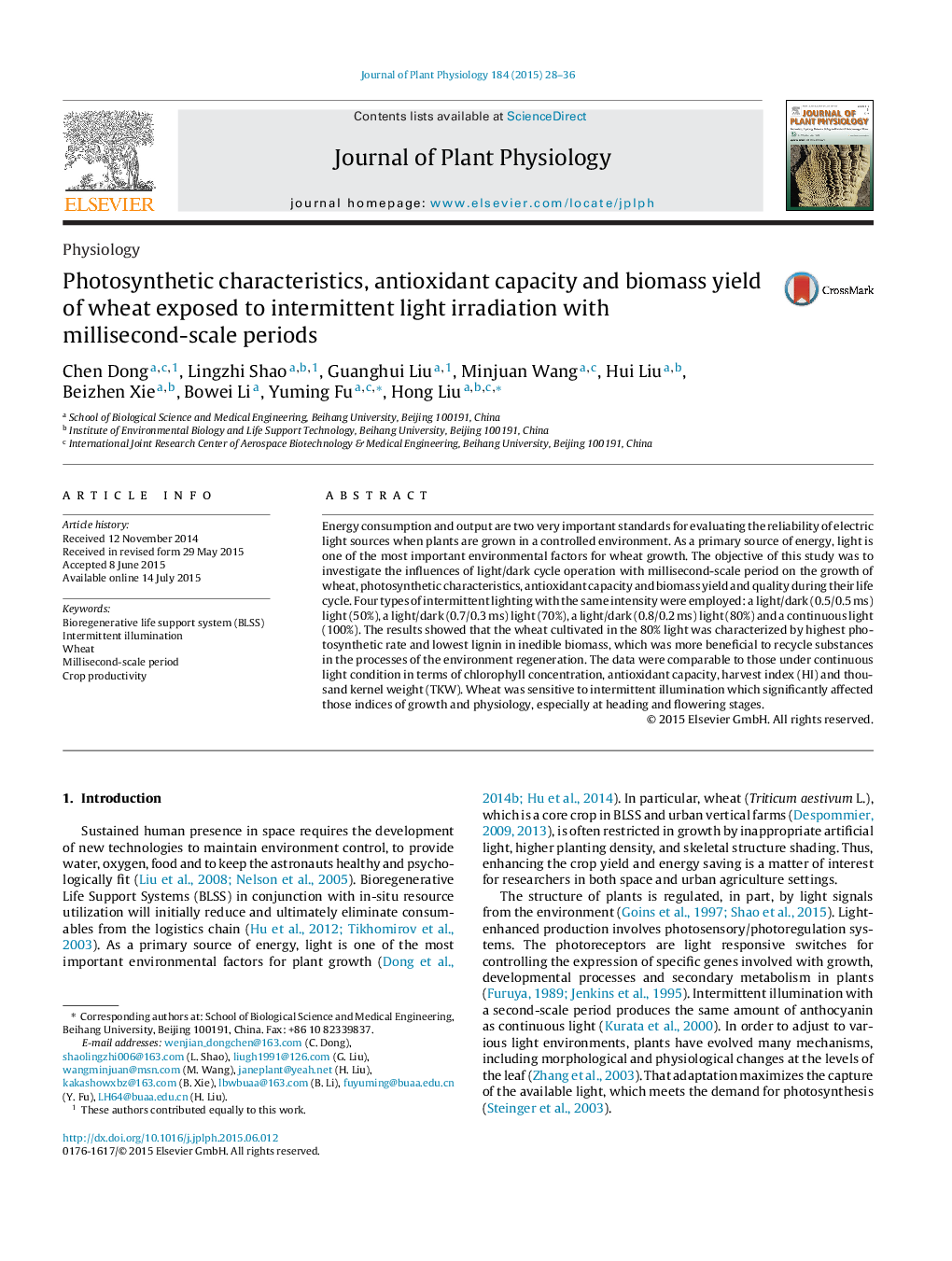| Article ID | Journal | Published Year | Pages | File Type |
|---|---|---|---|---|
| 2055576 | Journal of Plant Physiology | 2015 | 9 Pages |
Energy consumption and output are two very important standards for evaluating the reliability of electric light sources when plants are grown in a controlled environment. As a primary source of energy, light is one of the most important environmental factors for wheat growth. The objective of this study was to investigate the influences of light/dark cycle operation with millisecond-scale period on the growth of wheat, photosynthetic characteristics, antioxidant capacity and biomass yield and quality during their life cycle. Four types of intermittent lighting with the same intensity were employed: a light/dark (0.5/0.5 ms) light (50%), a light/dark (0.7/0.3 ms) light (70%), a light/dark (0.8/0.2 ms) light (80%) and a continuous light (100%). The results showed that the wheat cultivated in the 80% light was characterized by highest photosynthetic rate and lowest lignin in inedible biomass, which was more beneficial to recycle substances in the processes of the environment regeneration. The data were comparable to those under continuous light condition in terms of chlorophyll concentration, antioxidant capacity, harvest index (HI) and thousand kernel weight (TKW). Wheat was sensitive to intermittent illumination which significantly affected those indices of growth and physiology, especially at heading and flowering stages.
